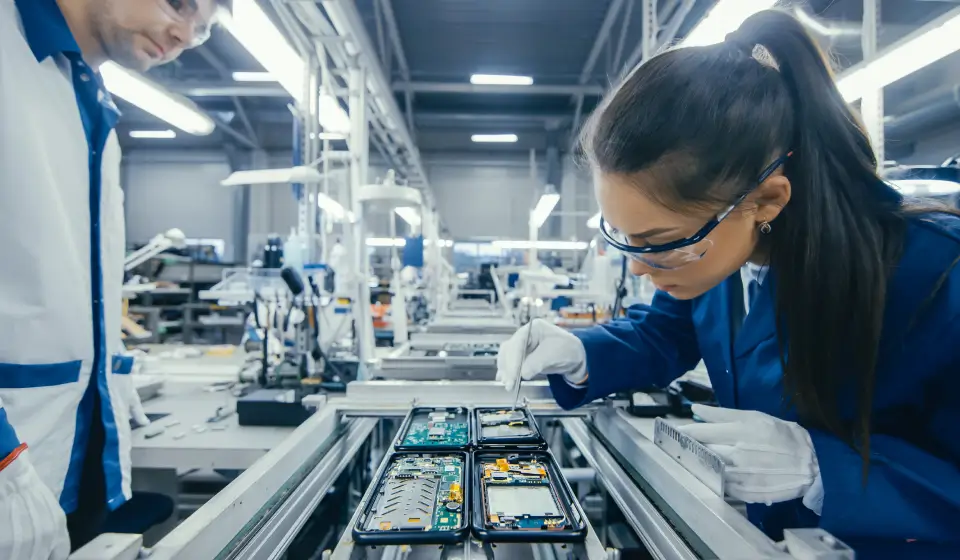The legendary Thomas Edison once quipped, "I have not failed. I've just found 10,000 ways that won't work." With his penchant for creative problem-solving, it's a good thing he lived in an era of great invention. Otherwise, the Wizard of Menlo Park, who famously proposed to his second wife, Mina, in Morse code, might have found himself in dire need of a crash course in standardization! Picture the intricate gears of a well-oiled machine, such as those on Edison’s phonograph, each component calibrated to precision. This is the essence of process standardization.
Now, back to that proposal…
Edison is said to have taught Mina how to use Morse Code, enabling them to communicate discreetly, even in the presence of others. When he used the code to ask for her hand in marriage, she replied in code as well. What a shining example of standardization!
Today, with businesses operating on a global scale, employing teams of individuals, and facing complex challenges in every direction, standardization is not just a convenience but a necessity.
It's the backbone upon which efficient operations and scalable growth are built. Imagine a multinational trying to coordinate its operations across different continents without standardized processes and protocols—it would be chaos, much like Edison’s studio, and rightfully so.
Some of the most recognizable brands, including Anheuser-Busch, are among these large organizations with expansive global operations and high-growth trajectories. Despite their market dominance, they remain steadfast in their pursuit of innovation, continuously exploring ways to augment their products and services. A vital part of their journey is process standardization.

Let's talk about standardization for a minute. It's all about setting up the same procedures, protocols, and guidelines across the board to make sure everything runs smoothly and tasks get done in a nice, organized way. Whether you're talking about making widgets in a factory or providing top-notch service in a fancy restaurant, standardization is key. Why? Well, it's like the magic ingredient that boosts productivity, makes sure quality stays top-notch, and keeps customers happy.
Here's why it's such a big deal:

Achieving effective standardization requires commitment and collaboration across the organization. However, large organizations frequently encounter hurdles in standardizing processes due to various factors:

This is where innovative solutions like DeepHow comes in with AI-powered video training. Large global organizations can overcome the challenges associated with standardizing processes and ensure that employees across all locations receive consistent and effective training.

If Edison were alive today, can you imagine what he’d say about AI? Or AI-powered video training? Who needs Morse Code when you have ChatGPT?!
But in all seriousness, AI has emerged as a game-changer, particularly in the realm of training and knowledge dissemination. One of the most transformative applications of AI is in video training, which not only standardizes processes across large organizations but also harnesses in-house expertise for enhanced efficiency, knowledge preservation, and streamlined operations.
Large organizations possess a wealth of knowledge dispersed among their workforce, often untapped or underutilized. Through expert-led training sessions captured in video format, organizations can capture and preserve this invaluable knowledge for future generations.
Moreover, by involving subject-matter experts in the creation of training content, organizations foster a culture of knowledge sharing and collaboration. Knowledge preservation is essential, especially in industries where turnover rates are high or where specialized skills are critical for operations, such as manufacturing. AI-powered video training ensures that expertise is not lost when employees leave, retire, or transition to different roles. This continuity of knowledge safeguards against disruptions and minimizes the risk of errors or inconsistencies in processes.

DeepHow's extensive knowledge library is a valuable repository of video training materials, meticulously curated for easy access. Continuously expanding and evolving, it benefits from contributions by both experts and users. This dynamic platform facilitates the documentation of best practices, innovative techniques, and troubleshooting tips, empowering all members of the organization with collective intelligence.
Case in point: DeepHow's technology-enabled ISAIC to standardize their training processes, ensuring that every employee, regardless of their starting skill level or background, received the same comprehensive training. This standardization was crucial for maintaining a high level of operational excellence and consistency in production quality. One of the most notable achievements was a reduction of over 60% in the time required for onboarding and training new employees. This efficiency gains not only accelerated the process of integrating new team members into their roles but also ensured that training was consistent and of high quality across the board.
It’s clear that standardization is indispensable for driving efficiency, consistency, scalability, and innovation in business processes. By embracing standardization as a strategic imperative, large organizations can enhance their competitiveness, agility, and resilience in today's dynamic marketplace. AI-powered video training can facilitate these efforts. Incorporating AI-powered video training, like DeepHow, into organizational strategies not only streamlines processes but also empowers teams to adapt and thrive in an ever-evolving business landscape.
- .... .- -. -.- ... / ..-. --- .-. / .-. . .- -.. .. -. --. -.-.--
(“Thanks for reading!” in Morse code.)

Start capturing, structuring, and activating your expert
knowledge today with a 14-day unlimited free trial.